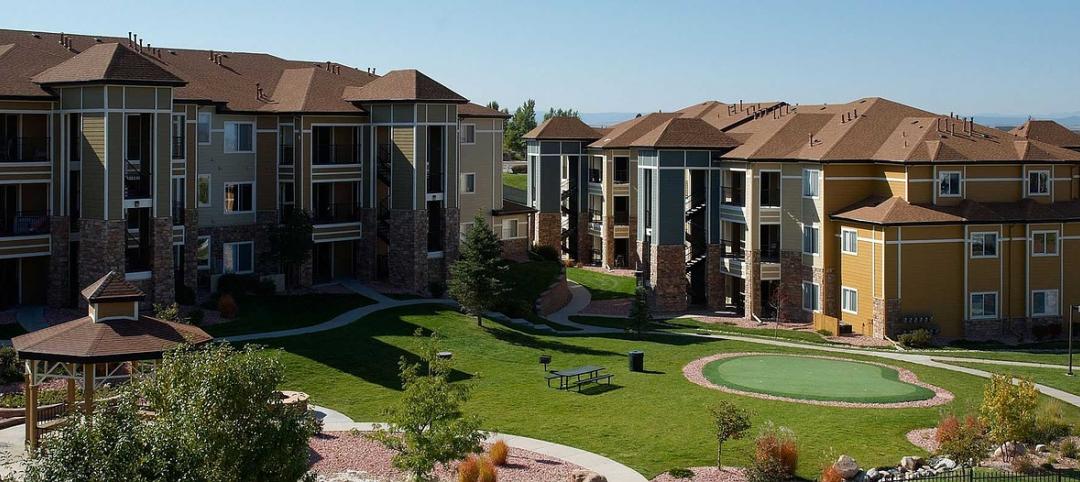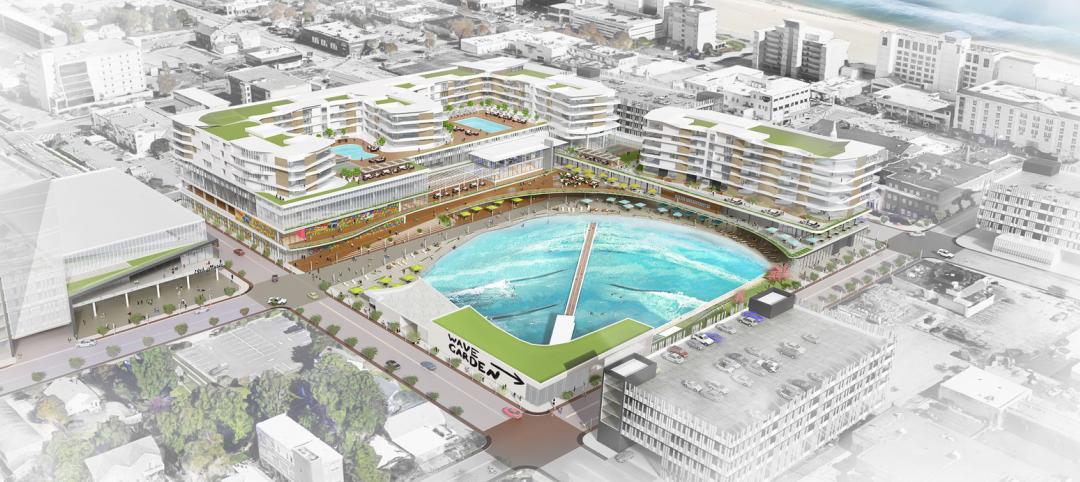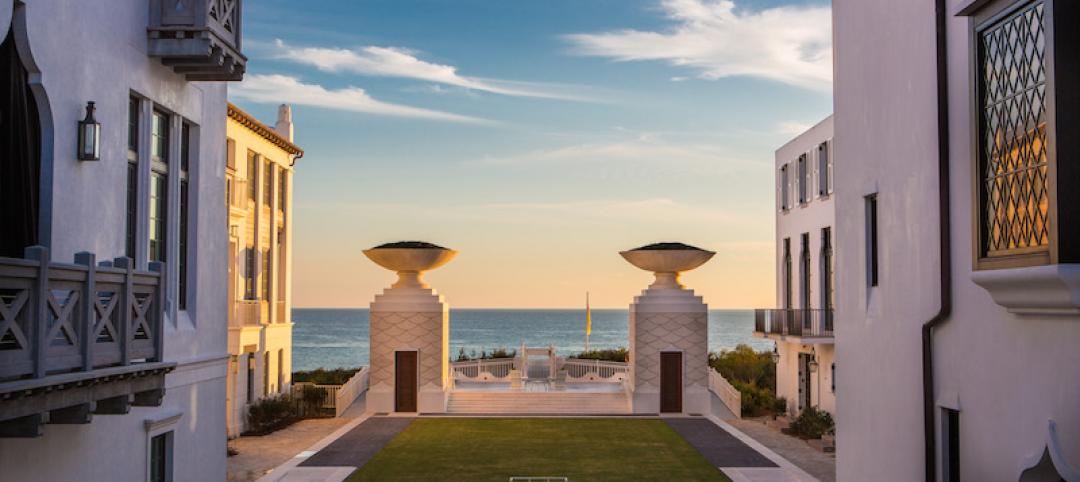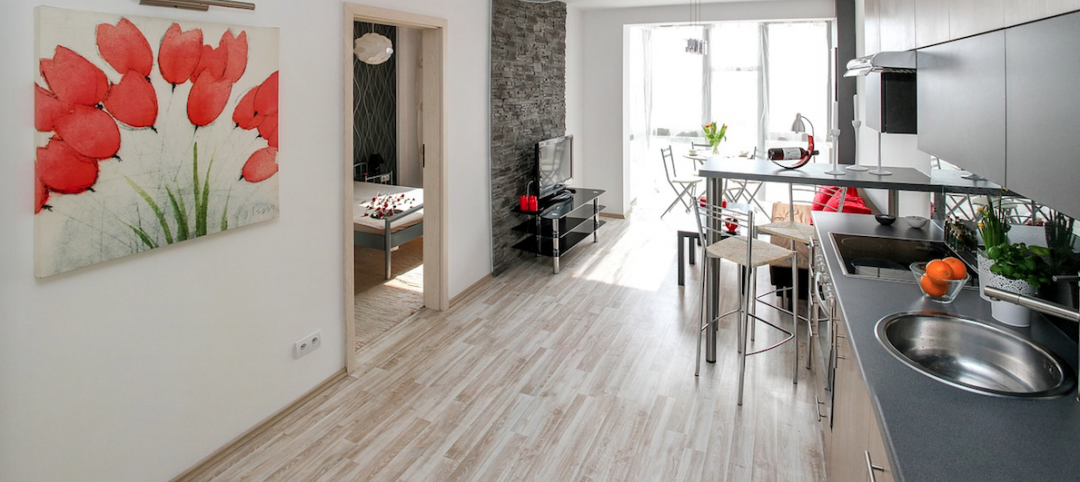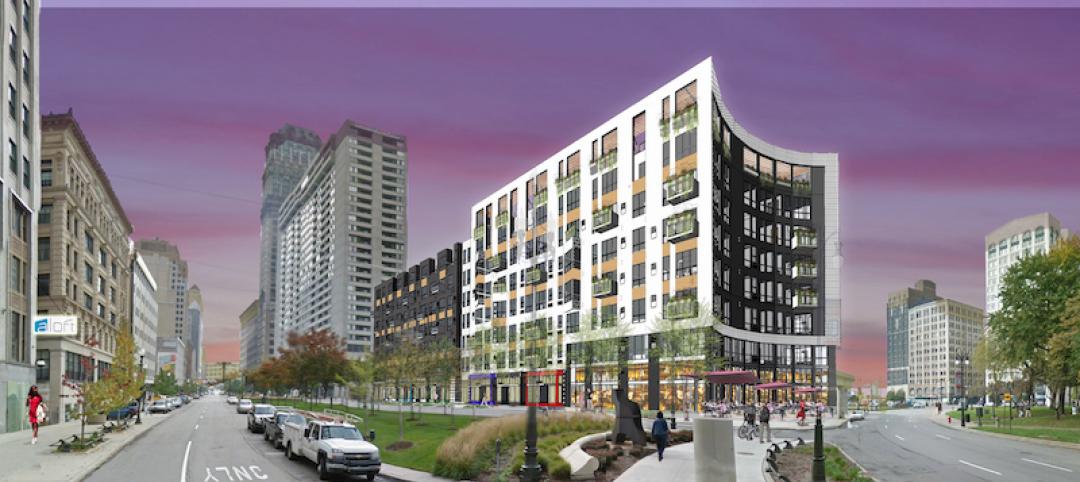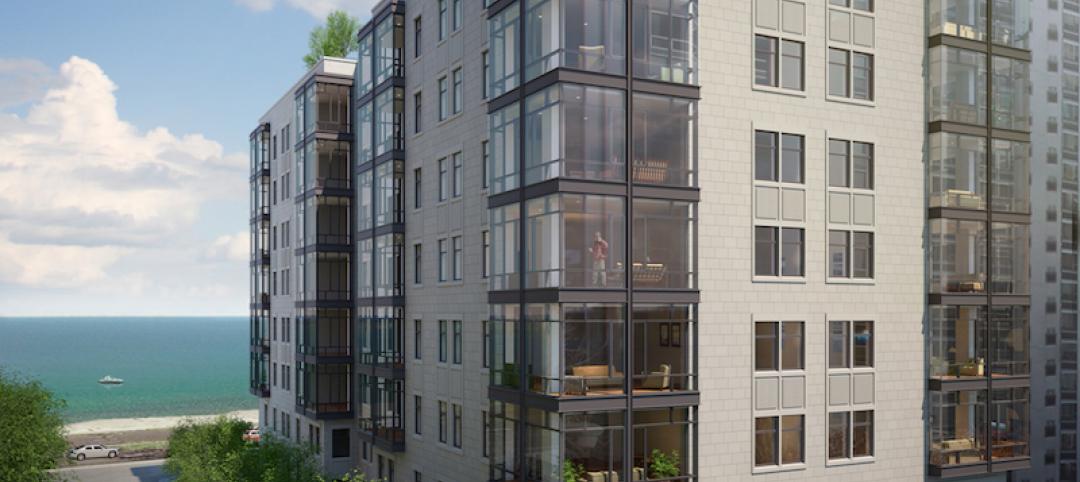HUB 32, a 65-unit multifamily housing development, will provide affordable housing and community amenities in Chicago’s Garfield Park neighborhood.
Brooks + Scarpa’s recently unveiled design takes inspiration from the American tradition of patchwork and quilting. The panels on the building’s exterior create a sense of depth and texture that’s meant to evoke the feeling of a handmade quilt. In addition to providing warmth and comfort, the use of quilting and stitching to inform the design draws on Chicago’s rich textile tradition.
“By incorporating elements of the city’s textile tradition into the design of our building, we hope to create a sense of connection and belonging for our residents,” Brooks + Scarpa says in a statement.
The design of the multifamily housing project also takes cues from the city’s centuries-old history of courtyard buildings. HUB 32 has an elevated courtyard that sits above ground-level commercial space. The courtyard creates usable space at the center of the project, and for the people living around it, the courtyard will provide privacy and safety.
The courtyard also will help the structure fit with its surrounding neighborhood. In addition, the strategic placement of the units and windows will orient the apartments to social spaces that sit apart from each other yet are visually connected to each other and to the street.
Brooks + Scarpa says the building’s design follows its five guiding principles of equity, innovation, a sense of place, environmental stewardship, and community engagement. The design firm says it will partner with local organizations to promote sustainability and support community events and initiatives. “Design excellence … can and should be for everyone,” the firm says in its statement.
On the Building Team:
Owner/developer: KMW Communities and Michaels
Design architect: Brooks + Scarpa
Architect of record: Studio Dwell
MEP engineer: Quest Design Group
Structural engineer: Rockey Structures

Here is the full design statement from Brooks + Scarpa:
The design of HUB 32, a 65-unit mid-rise residential building in Chicago is inspired by the concept of quilting and stitching. The inspiration came from American patchwork quilting traditions, exemplified by the Gee's Bend abstract geometric style-which is itself influenced by newspaper- and magazine-collages used for insulation on the inside walls of homes in the early rural American.
The exterior of the building is adorned with a series of materials and forms that mimic the appearance of a quilt, with each part representing a different pattern or color. These panels are arranged in a way that creates a sense of depth and texture, evoking the feeling of a cozy, handmade quilt.
The idea behind using quilting and stitching as the basis for the design was to create a sense of warmth and comfort, as well as a connection to the rich textile tradition of Chicago. The city has a long history of textile production, and we wanted to pay tribute to that history by incorporating these elements into the design of our building.
Overall, the building is designed to be a welcoming and comfortable place for its residents. Taking cues from the rich history of courtyard buildings in Chicago such as Pattington Apartments, the building is designed around an elevated courtyard above ground level commercial space. The courtyard typology has existed in Chicago for more than two hundred years. It promotes pedestrian-oriented neighborhoods as an alternative to sprawl, creating usable space in the center of the project, instead of unused, leftover space outside of the building volume.

More than any other multi-dwelling housing, courtyard apartments, “make you feel like you belong to a place.” For people living around the courtyard, the space provides a sense of safety and privacy; the courtyard is a quasi-public space that mediates between the home and the street. For the city at large, the courtyard is an urbane housing type that fits well into neighborhoods. Strategically placed windows, purposeful exterior elements and units that wrap the outer-most edges, orient the apartments to social spaces that are spatially apart, yet visually connected to each other and the street below.
In addition, the design of the building follows our five guiding principals: equity, innovation, a sense of place, environmental stewardship, and community engagement.
Design excellence is not mutually exclusive. It can, and should be for everyone. In terms of equity, we are committed to creating a building that is accessible and welcoming to all members of the community, regardless of their background or circumstances.


We are also committed to innovation, and are constantly seeking out new ways to improve the design and functionality of our building. This includes incorporating sustainable technologies and materials wherever possible, in order to reduce our environmental impact and provide our residents with a high-quality living experience. We embrace a creative approach to design and problem solving.
A sense of place is important to us, and we want our building to be a reflection of the unique character and history of Garfield Park and the City of Chicago. By incorporating elements of the city's textile tradition into the design of our building, we hope to create a sense of connection and belonging for our residents.
Finally, we are committed to environmental stewardship and community engagement. We believe that it is our responsibility to be good stewards of the environment and to work together with the community to create a better future for everyone. This includes initiatives such as partnering with local organizations to promote sustainability and supporting community events and initiatives.












Related Stories
Multifamily Housing | Jan 31, 2018
4 ways multifamily developers can attract Baby Boomer, Millennial buyers
As Baby Boomers downsize and Millennials begin buying homes, multifamily developments in dynamic urban areas are meeting the demand.
Sports and Recreational Facilities | Jan 25, 2018
Virginia Beach: A surf town with a wave problem no more
A world-class surf park will highlight Virginia Beach’s new live-work-play development.
Market Data | Jan 25, 2018
Renters are the majority in 42 U.S. cities
Over the past 10 years, the number of renters has increased by 23 million.
Resiliency | Jan 24, 2018
A luxury community in Florida mandates resilience in new-home construction
Alys Beach’s in-house GC builds to standards set by the FORTIFIED program.
Multifamily Housing | Jan 24, 2018
Apartment rent rates jump 2.5% in 2017, led by small and mid-sized markets
The average price for one-bedroom units increased the most.
Multifamily Housing | Jan 17, 2018
The Concours at Carlisle: A condo community for gearheads
The new development will represent the only auto condo community in Central Pennsylvania.
Mixed-Use | Jan 16, 2018
Mixed-use development under construction in Detroit’s central business district
The development is being built on the former site of the Statler Hotel.
Multifamily Housing | Jan 10, 2018
Multifamily 2018 outlook: Developers tap the brakes, but will maintain historic pace
Multifamily developers are poised to register the second-highest annual completions count of this cycle in 2018, but with fewer completions than 2017’s cycle peak, according to a CBRE report.
Multifamily Housing | Jan 9, 2018
New 58-unit luxury apartment building under construction in Chicago’s Gold Coast neighborhood
The 8-story building will feature two- and three-bedroom residences.
Multifamily Housing | Jan 5, 2018
Let’s discuss the Energy Star Multifamily High-Rise Program
The demand for rental housing has been on a steady climb since 2004.



